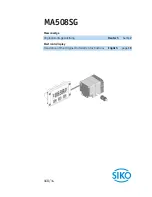
Introduction vacon • 3
24-hour s358 (0)40 8371 150 • Email: [email protected]
1. INTRODUCTION
1.1
Operation principle of BCU
When you want to slow down a running asynchronous motor fed by a frequency converter it turns
into a generator, feeding energy back into the frequency converter. The energy increases the voltage
in the DC-link. The frequency converter compensates for this increase by increasing the output
frequency, decreasing the instantaneous slip and increasing the motor load. The deceleration is, in
this case, dependent on the power losses in the converter and in the motor. This is usually sufficient
in most cases, for pumps, fans, conveyors etc. where the kinetic energy in the load is small or the
braking time is not critical.
When you have to brake down the motor faster than the losses allow, you have to use BCU module
and an external brake resistor (or resistors) for energy dissipation. The extra energy from the load
is turned into heat in the brake resistor. If the DC link voltage increases too much, the BCU turns on
and discharges the capacitors through the brake resistor. Applications where dynamic braking is
usually needed include centrifuges, cranes, some conveyors and drives requiring very fast
reversing.
Modules can be connected parallel with other BCU modules in order to increase braking capacity
(Figure 1).
In BCU application you can use either Analogue input or OPT-B8 option board for PT100 sensor
connection.
Start-up sequence of BCU application has been illustrated in Figure 2.
Figure 1. BCU in common DC bus system




































